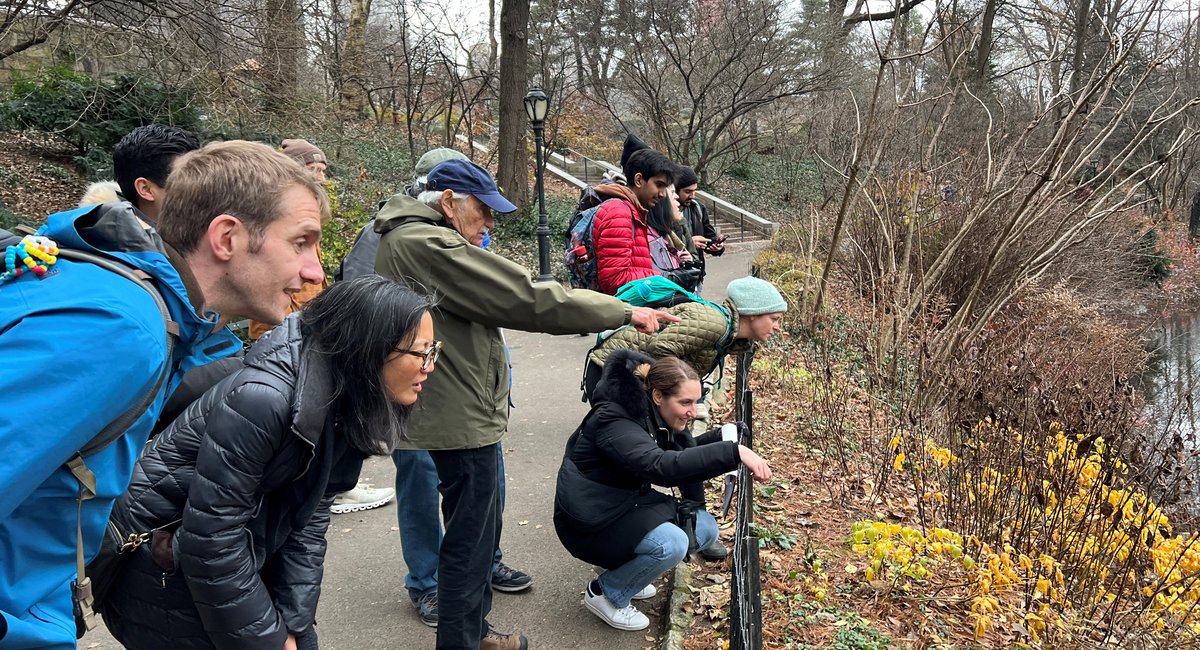The 124th annual Christmas bird count concluded on Sunday with a tally of 9,673 birds in Central Park – including many species whose ranges have moved northward by as much as 200 miles due to climate change, according to scientists.
Thousands of Christmas bird counts take place across the country between Dec. 14 and Jan. 5. They provide enthusiasts with a chance to gather and enjoy the birds while also contributing to annual bird censuses.
A review of data since 2012 from the National Audubon Society’s Central Park count shows birds once thought of as migratory southern species – like cardinals, tufted titmice, Carolina wrens and red-bellied woodpeckers – are moving to the New York area.
Experts caution that the volunteer census has many variables, including the number of participants, weather conditions and behavior unique to each species. But data from the count corroborates research that claims climate change has changed migratory bird behavior. In 2012, birders spotted 71 cardinals in Central Park. This year, the number was 90.
“What the Christmas bird count can show us is that there is a northward march of many of the more southern species,” said Geoff LeBaron, director of the Christmas Bird Count at the National Audubon Society. “In early years, they would have been just down south.”
American robins in Central Park no longer migrate because of warmer winters, according to birders who spotted 550 of them on the count, which NYC Audubon organized with the city’s parks department. In 2012, counters spotted 97.
“We think of robins as the harbinger of spring, but they don’t even leave the continent at this point,” LeBaron said. “They only go as far south as they need to because why should I fly from New York down to South Carolina when I can stay in New York?”
NYC Audubon uses the count to document the birds’ shifting ranges. Researchers combine the bird census with climate data to develop predictive models for different climate change scenarios. Those models could provide clues to where species might turn up in the future.
“The Christmas Bird Count tells us how birds are doing during this early winter period,” LeBaron said. “We can track where birds are and how they have changed their ranges during climate change over the last 60 to 70 years.”
Through the 1800s, it was an American tradition to go out on Christmas morning and compete for the honor of who could shoot the most birds. Ornithologist Frank Chapman then came up with the idea of counting the birds instead of killing them, according to the Audubon Society. Central Park has never missed a year of the count since it began in 1900.
This year, hundreds of volunteers flocked to the park and were divided into teams counting birds in designated sections of the greenspace.
“I see two finches in that tree by the evergreen,” said Deborah Straussman, a registrar for the New York Public Library from Queens. The count leader David Ringer confirmed with a closer look and then logged the birds on a tally sheet. A total of 47 finches were spotted in the park.
The winter bird counts are compiled into a continentwide count that also includes Latin America and the Caribbean. These tallies are used to develop trend data for as many as 500 bird species that are included in the survey, updated at least every other year.
This year, birders counted 54 species in Central Park. Among the birds were 1,079 street pigeons and 327 Canada geese. The most plentiful feathered creatures in the park were white-breasted, brown-winged house sparrows. Birders counted 2,593 of them – or more than a quarter of the park’s total bird count. Central Park’s most famous resident, Flaco, the Eurasian eagle-owl who escaped the Central Park Zoo and settled in the park, was nowhere to be found. On Wednesday, the Wall Street Journal reported that Flaco has become a “peeping tom,” peering into windows as far south as the Lower East Side.
One of the more unusual sightings was a yellow warbler, which typically winters as far away as South America.
Red-tailed hawks were one of the winners of the 2023 count. Birders counted a dozen of the majestic raptors, which is about double compared to a decade ago. Partridge credits the increasing numbers to the discontinued use of rodenticide within city parks.
Rat poison is lethal to birds such as hawks and owls. When a rodent eats the poisonous bait, it remains alive for several days. During that time, it’s sickly and slow, making it more attractive to predators. When birds eat these poisoned rodents, it’s lethal. According to the state Department of Conservation, rat poison was found in 84% of dead birds of prey in New York City.
At the end of the day, more than 100 volunteers and organizers gathered at the Arsenal building, which serves as the headquarters of the Parks Department and Central Park Zoo. What followed was a scientific ritual reminiscent of a Republican or Democratic National Convention.
Partridge called out the names of bird species, and the seven count leaders shouted back the numbers of sightings they recorded from designated sections of the park.
“This is like a reality check on what the resident birds are – this is the baseline,” said Jeffrey Kimball, a 15-year veteran of the Christmas Bird Count and president of the board of directors at NYC Audubon.


Leave a Reply